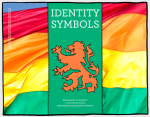Wherever I am in the world I smile a little when I glimpse the logo…
The 60 Percent Rule
For a shared identity to work, it is useful to know who is, and who is not, part of the group. This is sometimes quite clear, but quite often it isn’t. It can happen that people have different definitions of what the identity is and who belongs to it. This need not be a problem, as long as people know this of each other.
Even more, the fuzziness of boundaries, and conflicting ideas of membership, can actually help a group be creative. (Dare I mention ProductOwner-in-or-outside-team?) As long as people are aware of different perspectives and opinions, and know how to deal with it, the fuzzy boundaries can be turned into an advantage.
However, when a person is a member of multiple groups where the identities appear to be of the same kind, and on the same level (two teams, or two departments, or two organizations), it is probably smart for her to choose one primary identity. For example, it is hard to be a fan of two football clubs in equal measure. And people with two nationalities usually lean more towards one than the other.
This reminds me of the famous question:
“If you have two nationalities, which country will you cheer for, when the two national teams play against each other?”
I live in both Brussels and in Rotterdam. But I call only one of those cities my real home. (I will let you guess which one.) I like both Star Trek and Star Wars, but when it comes to a head-to-head between Data and C3PO I know who gets my support. For people in organizations it is the same, they prefer to have one team to cheer for.
I’ve heard some coaches suggest a 60% rule: everyone should spend 60% of their time on the same team, the same department, or the same organization. The rest of their time they can spend working for others.
How about you? Do you have one team (or one home city) to cheer for?
 This text is part of Identity Symbols, a Management 3.0 Workout article. Read more here.
This text is part of Identity Symbols, a Management 3.0 Workout article. Read more here.
Subscribe to my mailing list and be the first to receive future articles!





